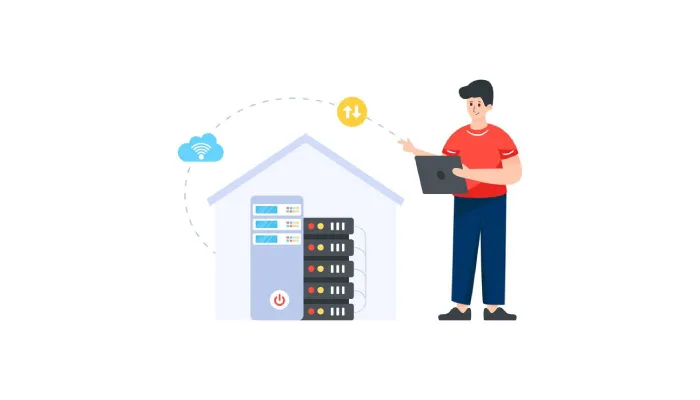
How to Choose the Right Network Load Balancer for Your Needs
Choosing the right network load balancer can be quite daunting, but it’s vital for your network’s performance and reliability. Start by identifying your business goals to guide your decision. Next, evaluate the various types of load balancers available, such as application and network load balancers, based on your needs. Understanding how your traffic flows is essential; assess its volume and peak times to determine capacity requirements. Security should not be overlooked, especially features like DDoS protection and firewalls. Lastly, consider cost implications and vendor support to ensure a long-term partnership that meets all operational demands while providing room for growth.
1. Identify Your Business Goals
To choose the right network load balancer, start by identifying your business goals. Clearly define the primary purpose of your applications, whether they are for e-commerce, content delivery, or enterprise resource planning. Establish measurable objectives, like reducing loading time by a specific percentage or achieving an uptime of 99.9%. Think about your future growth plans, including expanding your user base or introducing new features. Identify key performance indicators (KPIs) that will allow you to track the success of your load balancing efforts.
Engage with stakeholders to gather insights on their expectations and needs from the load balancing solution. Assess how load balancing can support your business continuity and disaster recovery plans. Evaluate how different load balancing options align with your overall IT strategy and consider the impact on customer experience and satisfaction. Prioritize your objectives based on urgency and importance to your business, and document these goals clearly to guide your decision-making throughout the selection process.
2. Evaluate Load Balancer Types
When evaluating load balancer types, start by assessing your specific needs. Decide if Layer 4 or Layer 7 load balancing is more appropriate for your applications. Layer 4 load balancers are great for high volumes of TCP/UDP traffic, while Layer 7 ones provide content-based routing and SSL offloading, which can enhance performance by easing the burden on backend servers. If your applications require session stickiness, it’s important to understand how different load balancers manage this feature. Also, check compatibility with both IPv4 and IPv6 to ensure broader access. Research hybrid options that blend Layer 4 and Layer 7 features for added versatility. Finally, consider whether you prefer open-source or proprietary solutions, weighing their respective benefits and limitations. Each choice has its trade-offs when it comes to performance, flexibility, and ease of use, so ensuring alignment with your existing infrastructure and future scalability is key.
3. Understand Your Traffic Patterns
Understanding your traffic patterns is crucial when choosing a network load balancer. Start by collecting data on your current traffic volumes, including peak times and average usage rates. This information helps you gauge the capacity your load balancer must handle. Identify the types of traffic your applications generate, such as web traffic, API calls, or streaming data, as this will influence the type of load balancer that best suits your needs.
Utilize monitoring tools to analyze traffic patterns over time. This analysis will help you understand user behavior, including how often users interact with your applications and the duration of these interactions. Additionally, consider the geographic distribution of your users, as it may impact the choice of load balancer, especially if you have a global audience.
Seasonal fluctuations in traffic can also play a significant role. For example, if your business experiences spikes during holiday shopping or promotional events, make sure your load balancer can scale accordingly. Evaluate whether your traffic is mostly inbound, outbound, or a mix, as this can influence configuration options and performance.
Don’t forget to document your traffic patterns thoroughly; this will inform your load balancing strategy and help you identify any bottlenecks in your current infrastructure that load balancing could address. Considering all these factors will enable you to choose a load balancer that effectively meets your traffic demands.
4. Assess Performance Requirements
When choosing a network load balancer, assessing performance requirements is crucial. Start by defining acceptable latency thresholds for your applications. Make sure the load balancer you choose meets these thresholds to avoid frustrating delays for users. Next, evaluate how much bandwidth your applications will require. Selecting a load balancer that can effectively handle your bandwidth needs is essential for maintaining smooth operation, especially during peak traffic.
Consider the importance of session persistence, particularly for applications like e-commerce sites, where users expect a seamless experience. Ensure that the load balancer can maintain sessions on specific servers as needed. Additionally, identify any specific performance metrics you need to monitor, such as response time and throughput. This will help you gauge how well the load balancer performs under various conditions.
Another critical factor is how the load balancer handles sudden traffic spikes. Your chosen solution should maintain performance levels even when traffic surges, preventing slowdowns or crashes. Assess the load balancer’s ability to manage connection limits and concurrent sessions, as this can impact user experience during busy times.
Determine if your applications require specific health check mechanisms to monitor server status. This is vital for ensuring that traffic is directed only to healthy servers, which helps maintain optimal performance. It’s also important to investigate how the load balancer affects the overall architecture and performance of your network. Finally, consider redundancy and failover processes. These features are essential for maintaining performance during outages. Research benchmarking results for potential load balancers to assess their capabilities and ensure they align with your performance requirements.
- Define acceptable latency thresholds for your applications and ensure your load balancer meets them.
- Evaluate how much bandwidth you require and select a load balancer that can handle it effectively.
- Consider the importance of session persistence for applications that require it, like e-commerce sites.
- Identify any specific application performance metrics you need to monitor, such as response time and throughput.
- Evaluate how well the load balancer can handle sudden traffic spikes without degrading performance.
- Assess the ability of the load balancer to manage connection limits and concurrent sessions.
- Determine if your applications require specific health check mechanisms to monitor server status.
- Investigate how the load balancer affects the overall architecture and performance of your network.
- Consider redundancy and failover processes to maintain performance during outages.
- Research benchmarking results for potential load balancers to assess their capabilities.
5. Consider Security Needs
When selecting a network load balancer, security should be a top priority. Start by evaluating the security features offered by different load balancers, such as Web Application Firewalls (WAF) and intrusion detection systems. These features can help protect your applications from common threats. Additionally, assess the DDoS protection capabilities of each option, as safeguarding against potential attacks is critical for maintaining uptime and reliability.
Encryption support for data in transit is another important factor. Ensure that the load balancer can handle encryption without significantly impacting performance. Integration with your existing security protocols is also vital; if you have established security measures, the load balancer should seamlessly fit into that framework.
User authentication and access control at the load balancer level can add an extra layer of security, especially for sensitive applications. Research the compliance requirements specific to your industry, such as PCI-DSS for payment processing, and confirm that the load balancer meets these standards.
Logging and monitoring capabilities are essential for tracking security incidents. The ability to generate detailed logs can help in auditing and responding to potential breaches. Lastly, investigate how often the vendor provides security updates and patches, as staying current with security measures is crucial. It’s also important to consider how these security features might affect overall system performance and user experience. Document your security requirements clearly, as this will guide your selection process and ensure you choose a load balancer that meets your needs.
6. Determine Deployment Environment
To choose the right deployment environment for your load balancer, start by assessing your existing infrastructure. You need to figure out if a hardware, virtual, or cloud-based load balancer is the best fit for your needs. Hardware load balancers provide dedicated resources, which can be beneficial for high-performance requirements, but they might lack flexibility. On the other hand, virtual load balancers offer scalability and efficient resource allocation, though they can come with some performance overhead. Cloud-based solutions are often more flexible and allow for easy integration with other services, but they require careful resource management.
A hybrid approach, combining on-premises resources with cloud services, can also be worth considering. This can give you the best of both worlds, allowing for better resource allocation while maintaining control over critical applications.
Evaluate how each option impacts scalability and flexibility as your needs evolve. For instance, if you anticipate significant growth or seasonal spikes in traffic, a cloud-based solution may be more advantageous due to its elastic capabilities.
It’s also essential to understand the management and maintenance differences between these options. Hardware solutions might require more physical upkeep, while cloud solutions can offload some of that responsibility to the service provider. Compatibility with existing applications and infrastructure is another factor, as you want to ensure that your chosen load balancer integrates seamlessly with your current systems.
Don’t forget to assess the total cost of ownership for each deployment option over time, including initial costs, ongoing maintenance, and potential upgrade expenses. Additionally, consider the skill sets required for managing each deployment type. Some may need specialized knowledge, while others can be handled by your current IT team.
Finally, research the deployment timelines and ease of implementation for each option. Document your preferences and constraints to guide your decision-making process effectively.
9. Plan for Redundancy and High Availability
To prevent single points of failure, consider deploying multiple load balancers in a clustered configuration. This can enhance reliability and ensure continuous service availability. You might choose an active-active setup, where all load balancers share the traffic load, or an active-passive configuration, where one serves as a backup in case the primary fails. Evaluating geographical redundancy is also important, as it allows your services to remain available across multiple locations, reducing the risk of downtime due to localized issues.
Automatic failover processes are essential to maintain uptime during outages. For instance, if a load balancer goes down, the system should automatically redirect traffic to a standby load balancer without manual intervention. Regular testing of these failover mechanisms is crucial to ensure they work as intended. Documenting strategies for these tests will help your team stay aligned on high availability goals.
While redundancy is beneficial, it can impact performance and cost. Assess how much redundancy you truly need based on your traffic patterns and business requirements. Additionally, using monitoring tools can help you track the health of both your load balancers and backend servers, allowing for proactive maintenance and quicker responses to potential issues.
Planning for routine maintenance schedules that minimize downtime is also key. Consider backup configurations and disaster recovery plans to further bolster your high availability strategy. Lastly, think about how redundancy impacts the architecture of your network and applications, ensuring that all components work seamlessly together. Documenting all redundancy strategies will keep your team informed and ready to tackle any challenges.
Frequently Asked Questions
What is a network load balancer and why do I need one?
A network load balancer helps distribute incoming traffic across multiple servers, ensuring that no single server gets overwhelmed. This improves performance and helps keep your services running smoothly.
How do I know the right type of load balancer for my business?
Choosing the right load balancer depends on your specific needs, such as traffic volume, types of applications, and how much redundancy you want. Start by assessing these factors to determine what fits best.
Can load balancers work with different types of servers?
Yes, load balancers can work with various server types, including physical, virtual, and cloud servers. They can manage traffic no matter where your servers are located.
What features should I look for in a network load balancer?
Look for features like automatic scaling, health checks for servers, SSL offloading, and security options. These can help enhance the performance and security of your applications.
Is it difficult to set up a network load balancer?
Setting up a network load balancer can vary in complexity depending on the technology you use. Some providers have user-friendly interfaces, while others may require more technical knowledge, so consider your team’s expertise.
TL;DR Choosing the right network load balancer is critical for your business. Start by identifying your goals, then evaluate different load balancer types like Application Load Balancers, Network Load Balancers, and Global Server Load Balancing. Understand your traffic patterns and assess performance needs, including throughput and session persistence. Consider security features essential for your applications, and decide on a deployment environment, hardware, virtual, or cloud. Don’t forget to look at licensing costs and vendor support. Plan for redundancy to ensure high availability, and continuously monitor performance for optimization.



